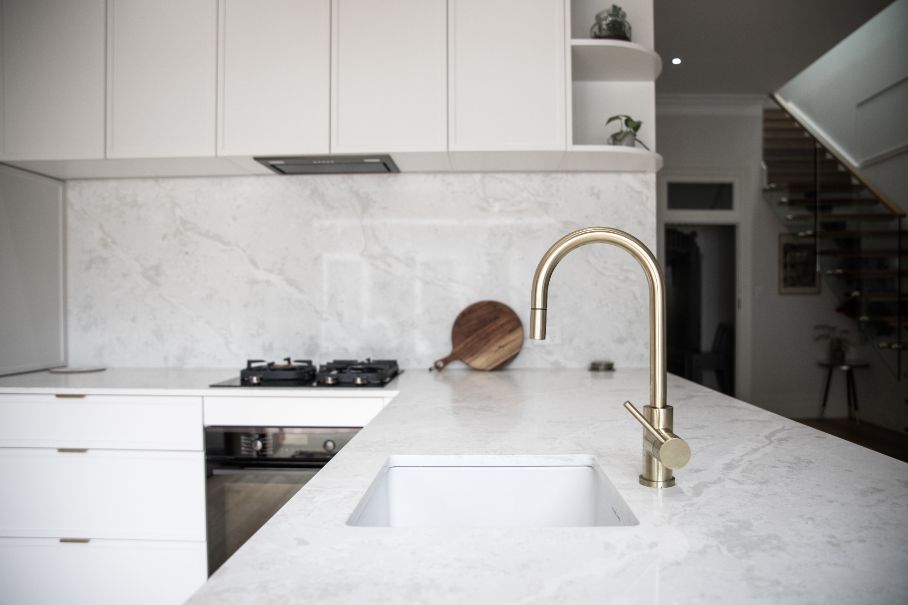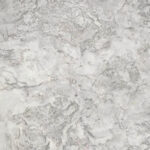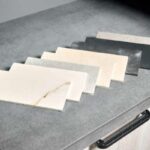
As homeowners seek to create functional and beautiful spaces, natural stone materials have become increasingly popular for kitchen and bathroom countertops. Quartzite has emerged as a top choice for its stunning appearance and durability.
Often compared to marble in terms of its beauty, quartzite surpasses granite when it comes to strength, resistance, wear and tear. As a result, it has become a favorite among homeowners who desire the natural elegance of stone but with the added practicality of increased durability.
In this article, we will delve into the secrets behind the rising popularity of quartzite countertops in contemporary homes.
What is Quartzite?
Quartzite is a metamorphic rock formed when sandstone is subjected to high pressure and heat, resulting in the fusion of the quartz grains. This process gives quartzite its unique properties, including its hardness and durability.
Difference Between Quartz And Quartzite Countertops
Since the names are almost the same, most people assume Quartz and Quartzite are the same, but they are not. Quartz is manufactured and is less expensive and less durable, while quartzite is a natural stone that undergoes a natural process through high pressure beneath the earth’s crust to become a metamorphic rock; it is more expensive and longer lasting.
Quartzite Is Low-Maintenance
While quartzite is known for its impressive durability, it’s not completely immune to wear and tear. Quickly wipe up any spills, especially acidic substances like wine or coffee, to prevent stains from setting in. A mixture of mild dish soap and water is usually the most effective way to clean your quartzite countertops. Consult with your stone supplier for any specific cleaning recommendations.
In general, steer clear of abrasive tools and harsh cleaners like bleach, ammonia, and acid-based products, as these can strip the sealant and cause permanent staining or etching.
To keep your quartzite countertops in top shape, use a cutting board to prepare food and prevent sharp objects from damaging your countertops. Although quartzite can withstand high temperatures, it’s always a good idea to use potholders or trivets to protect the surface. We recommend resealing your quartzite countertops like granite annually to maintain their non-porous nature.
Quartzite Has a Variety of Colors
Quartzite comes in white and gray tones; however, additional color variants are due to minerals within the stone, such as iron. Some common colors of quartzite include:
- White: White quartzite has a crisp and clean look that can add a bright and airy feel to a space.
- Gray: Gray quartzite ranges in the shade from light to dark and can provide a neutral and sophisticated look.
- Black: Black quartzite adds a dramatic and modern touch to any kitchen or bathroom.
- Gold: Gold quartzite has a warm and luxurious look and can add a touch of glamor to a space.
- Purple: Purple quartzite is a rare and unique color that can add a touch of drama to a kitchen or bathroom.
- Beige: Beige quartzite is a neutral and classic choice that can complement many styles and decor.
- Red: Red quartzite adds a bold and vibrant touch to any space and can make a statement in a kitchen or bathroom.
In addition to these solid colors, quartzite also comes in patterns ranging from subtle to dramatic. Some quartzites have veining similar to marble, while others have bolder patterns and swirls.
When choosing a color and pattern for your quartzite countertops, consider the overall style and decor of your home and the amount of natural light the space receives. Darker colors may absorb more light and make a room feel smaller, while lighter colors can reflect light and make a space feel larger. It’s also a good idea to see a sample of the quartzite in person before making a final decision, as the color and pattern can vary from one piece to another.
Quartzite is Cheaper Than Marble
In terms of cost, quartzite is generally more expensive than granite and quartz, but it is usually less costly than marble. You can expect to pay between $60 and $120 per square foot of material for quartzite, depending on the specific type you choose.
When it comes to finishes, a polished finish is often the standard for quartzite countertops, but you can also opt for a honed or leathered finish for an additional cost. If you are drawn to the elegance and sophistication of marble but want a more budget-friendly option, quartzite may be a perfect choice. It offers a similar look and feels to marble at a lower cost.
Choosing which material to use when upgrading your kitchen and bathroom is never easy. So if you need expert help to select the best quartzite countertop for your bathroom or kitchen remodel, call one of our MC Granite locations:
Kennesaw- 770.833.8075 |Blue Ridge: 706.400.6610 or visit our website for a wider selection and useful design tools.




